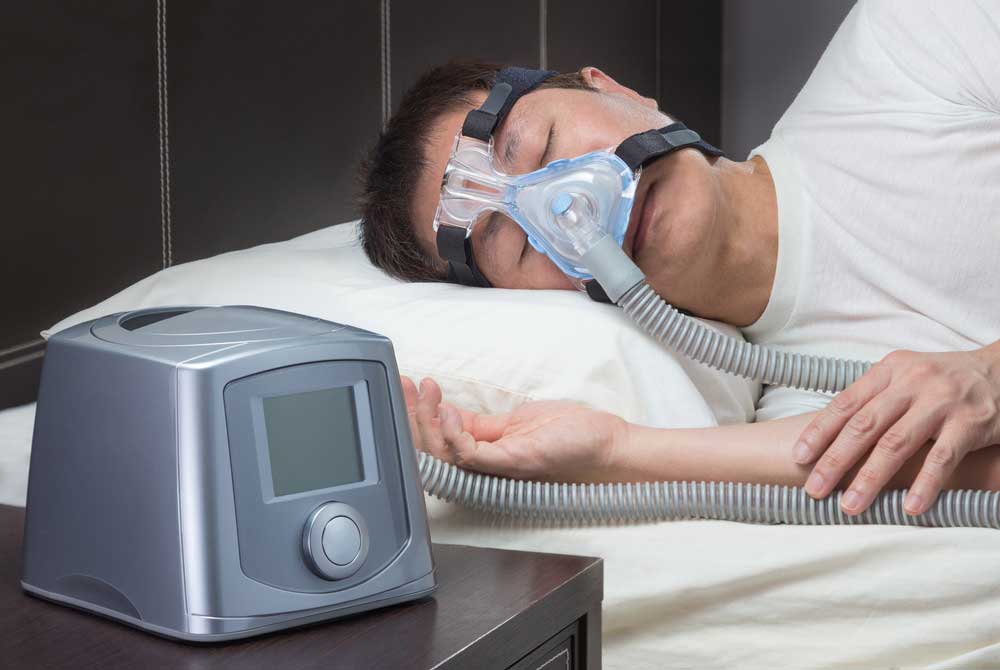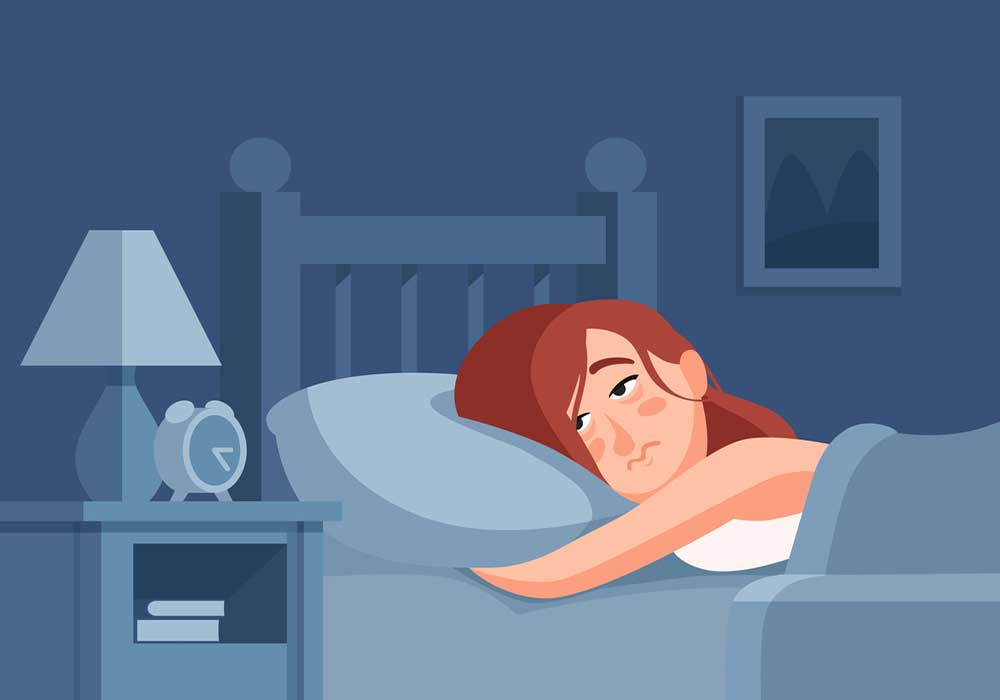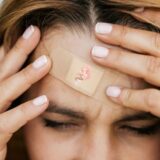Breathing has been described by top scientists as “important” for some reason. Unfortunately, some of us have trouble breathing at night, which is… less than ideal. Obstructive sleep apnea (OSA) is a condition where the airway is periodically blocked while sleeping, leading to sleep disruptions. The word apnea comes from the Greek language. The prefix a– means “not” and –pnea comes from the word for breath, the same root as the word “pneumatic.” OSA is very common, with around one billion people suffering from the condition worldwide. Most people are unaware they have OSA because the breathing interruptions occur when sleeping. Regardless, OSA can cause people to snore, wake up at night, and have sleep that isn’t restful. This can lead to complications with cardiovascular and mental health, quality of life, and excessive sleepiness – which makes driving more dangerous. So how does breathing work, why does the airway get blocked with obstructive sleep apnea, and is there anything we can do about it? Breathing is actually a pretty complex operation. Normally, breathing out is mostly an act of relaxing, but breathing in is a highly coordinated effort. Muscles in the diaphragm and chest contract to open the lungs and create a vacuum. The upper airway consists of the respiratory tract from the nose to above the vocal cords. This unique part of the body processes both food and air, requiring elasticity and flexibility to accomplish these competing tasks. It also produces speech sounds, chewing, sneezing, etc. The muscles that coordinate these tasks need to be contracted when breathing in for the airway to remain open. In OSA, the upper airway gets blocked. When we lie down the fluid that pools in our legs flows up to the rest of the body, causing it to swell. When we sleep, the brain may not keep the throat muscles firm, causing a partial collapse of the throat. This is exacerbated when lying on the back, as the tongue and jaw fall into the airway. Alone, none of these would cause OSA. A partial blocking of the airway frequently results in snoring as bits of the throat flap in the breeze. OSA occurs when the changes we experience during sleep accompany structural damage to the upper airway. This damage can take many forms: a jaw that is small or set back in the throat, enlarged adenoid glands, and shifting bone structure. Additionally, increased adipose (fat) tissue in the neck can narrow the airway. Other risks include being male, obese, older, pregnant, and sleeping on the back. Some substances can increase the risk of OSA, including alcohol, cigarettes, sedatives, and hypnotics like benzodiazepines. These risk factors cause the throat to narrow or the brain to relax the jaw (or both) which causes the airway to temporarily collapse. Instead of pulling air into the lungs, the vacuum pulls the throat together. The body doesn’t get enough oxygen, and trouble increases from there. So what can be done? A lot, actually! The first step is a diagnostic test. A nighttime in-laboratory sleep test called polysomnography is the go-to test, but home and portable sleep tests exist as well. Guidelines and directions must be carefully followed on portable kits to ensure accurate findings. If you do have OSA, the remedies vary widely. First, it’s a good idea to abstain from things that exacerbate OSA; like drinking and smoking. Second, sleeping on the side may provide some relief in mild cases. Beyond this, medical professionals may look into treating related disorders like asthma and heart failure. A sleep specialist may recommend or prescribe a Continuous Positive Airway Pressure (CPAP) machine, which pushes air into the throat instead of relying on the lungs to pull it in. These are highly effective but have low adherence, with around 50% of patients using the machines for less than 3 hours a night after the first month. In more severe cases, a specialist may recommend an oral appliance and/or surgery to physically change the structure of the airway. For many people, the solution to OSA may be to expand the airway by losing weight. This can be easier said than done, and clinical trials are looking into the effects of medications that induce weight loss for their ability to also tackle OSA. With luck, these new routes of treatment will let those with OSA breathe a little easier at night. Staff Writer / Editor Benton Lowey-Ball, BS, BFA
References: Choudhury, N., & Deshmukh, P. (2023). Obstructive Sleep Apnea in Adults and Ear, Nose, and Throat (ENT) Health: A Narrative Review. Cureus, 15(10). doi.org/10.7759/cureus.47637 Del Negro, C. A., Funk, G. D., & Feldman, J. L. (2018). Breathing matters. Nature Reviews Neuroscience, 19(6), 351-367. https://www.ncbi.nlm.nih.gov/pmc/articles/PMC6636643/ Eckert, D. J., & Malhotra, A. (2008). Pathophysiology of adult obstructive sleep apnea. Proceedings of the American thoracic society, 5(2), 144-153. https://www.ncbi.nlm.nih.gov/pmc/articles/PMC2628457/ Otis, A. B., Fenn, W. O., & Rahn, H. (1950). Mechanics of breathing in man. Journal of applied physiology, 2(11), 592-607. Downloaded from journals.physiology.org/journal/jappl (073.035.112.088) on April 30, 2024 Sankri-Tarbichi, A. G. (2012). Obstructive sleep apnea-hypopnea syndrome: Etiology and diagnosis. Avicenna Journal of Medicine, 2(01), 3-8. https://www.ncbi.nlm.nih.gov/pmc/articles/PMC3507069/ Slowik, J. M., Sankari, A., & Collen, J. F. (2022). Obstructive sleep apnea. In StatPearls [Internet]. StatPearls Publishing. https://www.ncbi.nlm.nih.gov/books/NBK459252/
Listen to the article here:
GRID VIEW
Idiopathic hypersomnia (IH) is a rare neurological sleep disorder that can drastically affect a person’s life. Those suffering from IH have a hard time staying awake and alert during the day. They may fall asleep at inappropriate times and not notice. There is no FDA approved treatment for IH. Some can take medication, typically taken for narcolepsy, to improve symptoms. Unlike narcolepsy, scheduled naps will not help those suffering from IH. A key symptom that differentiates IH from other sleep disorders is long naps that are not refreshing with no known cause. Symptoms IH’s symptoms are severe and typically disrupt daily activities. It can be difficult to drive, work, go to school and do other daily tasks we take for granted. To better understand IH we need to learn the symptoms. Common symptoms include: Treatment As mentioned, there is no known FDA approved treatment for IH. The treatment is usually aimed at addressing the excessive daytime sleepiness over other symptoms, typically with medication. What really sets IH apart and differentiates it from other sleeping conditions is that it usually can not be improved through lifestyle changes. Those with IH do not have energizing sleep, so frequent planned naps and improving sleep at night typically do not work. Participating in clinical trials is one of the best ways to find a cure for IH, or improve the symptoms and create a better quality of life. Source: Generic and Rare Disease Information Center, Medline Plus
Narcolepsy is a sleep disturbance characterized by a disabling level of daytime sleepiness. It is estimated that one in every 2,000 Americans suffer from narcolepsy, yet about 25% have been diagnosed and are receiving treatment.
Those suffering from narcolepsy can experience “sleep attacks” that are repeated throughout the day. They can even occur during daily routines like eating, walking or driving and are not as a result of inadequate sleep.
Going undiagnosed, narcolepsy can be socially disabling and isolating leading to depression. Type 2 diabetes can also occur in people with untreated narcolepsy. Unfortunately, only about 5% of patients seen in a sleep lab are narcolepsy patients. In order to improve these numbers and better diagnose narcolepsy, it is vital to know the early symptoms.
Symptoms of narcolepsy usually occur in young adults ages 15 to 25. Symptoms can include:
- Excessive daytime sleepiness (EDS): This is the primary symptom of narcolepsy. You may have sudden urges to fall asleep, even if you have had a full night’s sleep.
- Hallucinations: Some narcolepsy patients experience very real hallucinations while sleeping. These hallucinations are typically a presence in the room and can be very disturbing and disruptive.
- Sleep paralysis: You might lose the ability to move while either falling asleep or waking up. Sleep paralysis can be paired with hallucinations.
- Disturbed nighttime sleep: About 50% of people with narcolepsy have troubles sleeping through the night, often times waking up frequently.
- Memory problems: EDS can cause memory problems. You may not remember something someone told you because you were not fully awake at the time.
- Cataplexy- Is a sudden loss in muscle tone and only happens if you have narcolepsy coupled with cataplexy. Cataplexy can occur when there is extreme emotion, for example being surprised. Your muscles can become weak or even paralyzed.
Seeking a doctor for treatment of narcolepsy is vital, but there are lifestyle changes that can be made to manage the disease as well. Examples include maintaining a consistent sleep schedule and planning to take frequent naps throughout the day. Otherwise, treatment for narcolepsy involves medication.
With a new understanding of narcolepsy, researchers are creating different ways for treating the disorder. Some programs are experimenting with ways to increase brain levels of histamine, a brain chemical that is effective in improving alertness.
Other researchers are working on ways to improve hypocretin, which are neurotransmitters that promote wakefulness and regulate sleep. Narcolepsy coupled with cataplexy is caused by a loss of brain cells that produce these neurotransmitters. The goal is to improve narcolepsy symptoms by restoring hypocretin production in the brain.
Sources: American Academy of Sleep Medicine, Narcolepsy Network, Sleep Education, Harvard Medical
Sleep apnea affects approximately 22 million adults in the US, yet 80% of sleep apnea cases remain undiagnosed. If undiagnosed, sleep apnea could lead to cardiovascular disease and diabetes. With cardiovascular disease being the number one killer of both men and women, it is vital to be seen by a doctor for treatment.
What is Sleep Apnea?
Sleep apnea is an obstructive condition that prevents your body from receiving an adequate amount of oxygen causing interruptions in regular sleeping patterns. There are two main types of sleep apnea, obstructive and central. Obstructive sleep apnea occurs when there is a blockage in the airway. The tongue relaxes and blocks the back of the throat while sleeping.
Central sleep apnea occurs when the brain fails to communicate to the muscles to breathe.
Both of these conditions can cause the body to lose oxygen and wake up frequently throughout the night. This can result in daytime fatigue and sleepiness. Other symptoms include loud snoring, morning headaches and insomnia.
How is Sleep Apnea Treated?
The only way to properly diagnose sleep apnea is through a sleep study. Sleep studies are done at a sleep laboratory or can be taken home depending on the physician’s orders. Once diagnosed, the patient may be given a positive airway pressure (PAP) machine. This machine is worn over the mouth and pumps air through the nose and throat to ensure airways stay open. Other treatments include mouthguards to keep the tongue from blocking airways, weight loss, and avoiding sleeping on one’s back.
For best practice, always talk to your doctor if you are having trouble sleeping through the night.
Already diagnosed with sleep apnea? Consider participating in clinical research trial. It is one of the best ways to help improve medical treatments and increase the knowledge that researchers have about sleep apnea.
Sleep is essential for the body to repair and restore itself. In fact, sleep is so important that humans spend approximately 30% of their lives sleeping. However, since the beginning of recorded time and undoubtedly before that, some people have struggled to sleep. Fortunately, over the last 50 years our understanding of how to improve and correct the body’s sleep systems has advanced tremendously. This research has led to new understanding of how people sleep and why about 30% of the US population struggles with sleep disorders such as insomnia.
Insomnia is defined as dissatisfaction with sleep quantity or quality associated with difficulty falling asleep or staying asleep, even when there is adequate sleep opportunity (7-8 hours). This can cause significant social or functional distress and impairment. The most common sleep disorder in the US is Insufficient Sleep Syndrome, in which sleep deprivation occurs from an inadequate amount of sleep. Insufficient Sleep Syndrome is voluntary, but unintentional, unlike insomnia. 1 A recent poll of US adults suggests an average sleep time of just over 6 hours which is 2 hours less than we were sleeping 100 years ago, however, our sleep need has remained constant.
In order to achieve quality sleep, many insomniacs often self-prescribe antihistamines and alcohol. These treatments often have negative short and long-term outcomes. The first recommended treatment is Cognitive Behavioral Therapy (CBT), but this involves a trained therapist as well as a significant time commitment. These aspects combined with the fact that it is not well reimbursed by insurance can make it prohibitive for many individuals. A more cost-efficient alternative can be self-directed computer-based programs. Traditional pharmaceutical sleep products (hypnotics) have focused on depressing the central nervous system directly, but these medications have limitations due to adverse effects such as hangover, amnesia, abuse liability and dependence.
To end on a positive note, new research is focusing on some different ways to treat insomnia. We are excited to be involved at two of our North Florida ENCORE Research Group offices. If you are interested in getting involved in any of our research studies, call your local office today!
- http://www.sleepeducation.org/sleep-disorders-by-category/hypersomnias/insufficient-sleep-syndrome









